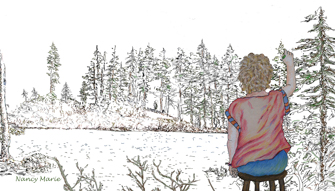

“…I believe this series (the ICWIB activities) is helpful to relieve stress because students become visibly calmer…”
“…It is powerful to witness drawing as a means to calm the students…”
“…The program has also helped me personally. I use the program in the same way I hope the students will use it. When stressed, I close my eyes and scribble with my left hand. I’m right handed so I must calm down and focus to do this. When I can be present and focused, everyone in the classroom benefits. I have also become an avid Reflective Circle creator (one of the ICWIB program activities). My creations add a sense of beauty and accomplishment to my life…”
“…Many students of all the age groups expressed they felt calmer after the exercises…”
“…Throughout my teaching career I have been distressed by the fact that we teach to the children’s heads while ignoring their hearts. The ICWIB program is a tool for connecting with a child’s heart. It is fun for the students and easy for them to grasp. I hope that further studies will be done with the ICWIB program in the public school setting….” “…It lets us express our self in a way that lets us see how we are feeling…”
“(The I Create What I Believe! program) …adds a wealth of articulate language communicating into the classroom that benefits self-confidence and empowers students toward positive problem solving…”
“…As a hands-on, full-time mother of five children, and teacher of children’s yoga and art for over 15 years, I can easily recognize when a child’s negative behavior, insecurity, and lack of self-esteem is positively transformed. And it has been my experience in working with children ages 3 to 18, from the inner city to upper-class private schools, the I Create What I Believe! art program never fails to allow the students’ transformation from a tired, angry, stressed and negative state of being to a relaxed, receptive, positive state of being. With ICWIB, children’s spirits get a boost of positive energy and they magically remember who they really are—open vessels with anger, stress, tiredness, fears, worries, and so on, quickly absorbed by lines, shapes, and scribbles made freely and mindlessly.
One of my students said as she observed her scribble art. “I don’t have to be angry anymore, my anger is on the paper.” Another challenging, hyper seven-year-old boy started the ICWIB scribbling process and literally finished by stabbing and ripping his paper. When he was finished, to my amazement, he stood indefinitely in a focused, balanced yoga tree posture. Parents of my students look in the windows of the studio and tell us they want to take our class as the crayon scribbles look like so much fun!…”
